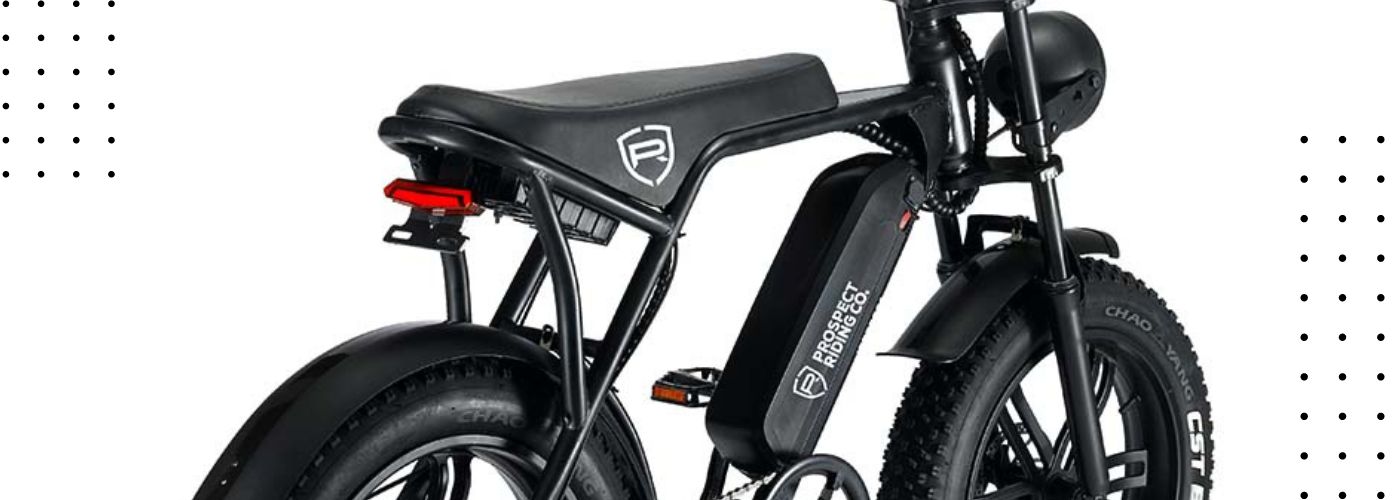If you're diving into the world of electric bicycles, understanding the heart of your ride—the e-bike battery—is key.
Join us on a friendly journey as we explore the best battery options.
Learn how to reset and charge your battery at home, and demystify the concept of universal e-bike chargers.

What Electric Bike Battery Is Best
Whether you’re considering the reliability of an electric bike like the Venice Cruiser or the eye-catching style of the Malibu Cruiser, the search for the best e-bike battery for any ride involves balancing factors such as capacity, weight, lifespan, and charging time. Here are the main types of e-bike batteries to consider:
Lithium-Ion (Li-Ion) Batteries:Lithium-ion batteries are the most common and widely used for e-bikes. They offer a favorable balance of energy density, weight, and lifespan. Li-Ion batteries are known for being lightweight, providing a good range, and having a reasonably long lifespan when cared for properly.
Lithium Polymer (LiPo) Batteries:LiPo batteries are similar to Li-Ion but come in a flexible pouch rather than a rigid case. This flexibility allows for creative battery designs, making them suitable for some sleek and integrated e-bike models.
Nickel-Cadmium (NiCad) Batteries:While less common today, some older e-bike models may use NiCad batteries. They are heavier, have lower energy density, and are more prone to memory effect. Advances in technology have made Li-Ion and LiPo more popular due to their superior performance.
Nickel-Metal Hydride (NiMH) Batteries:NiMH batteries are also an older technology, being heavier and less energy-dense compared to Li-Ion. They may still be found in some e-bike models but are gradually being phased out.
Choosing the best e-bike battery depends on your specific needs. Consider factors like the range you desire, the weight you're willing to carry, and your budget.

How To Reset An Electric Bike Battery
When it comes to how to start riding an e-bike, one of the first things you should learn is how to address common issues - especially when it comes to resetting your battery!
First, ensure your e-bike is turned off. If it has a key or a power button, switch it to the off position. Next, disconnect the battery. On many e-bikes, the battery can be easily disconnected. Locate the battery release mechanism and remove the battery from its compartment.
Allow the disconnected battery to sit for a few minutes. This allows any residual charge to dissipate. Reinsert the battery into its compartment and ensure it is securely connected. Make sure any locking mechanisms are engaged.
Turn on your e-bike and check if the issue persists. In some cases, this simple reset can resolve connectivity or performance issues!
If the problem persists after a reset, consult your e-bike's user manual or contact the manufacturer for further guidance. Avoid attempting complex repairs without proper knowledge to prevent damage to your e-bike or its battery.
How To Charge An Electric Bike Battery At Home
Charging your e-bike battery at home is a straightforward process, and it’s one of the first things you should learn as you get to know exactly what an electric bike is. Most e-bikes come with a charging cable and adapter. Here's a step-by-step guide:
Locate the Charging Port: Identify the charging port on your e-bike. It's usually located near the battery compartment and may have a protective cover.
Connect the Charging Cable: Plug the charging cable into the charging port on your e-bike. Ensure that the connection is secure to prevent interruptions during charging.
Connect to a Power Source: Plug the other end of the charging cable into a standard electrical outlet. Make sure the power source is compatible with the voltage requirements of your e-bike charger.
Monitor the Charging Process: Keep an eye on the charging process. Most e-bike chargers have indicator lights that show the charging status. It's recommended to charge the battery in a well-ventilated area and avoid leaving it unattended for extended periods.
Unplug and Store Safely: Once the battery is fully charged, unplug the charging cable from both the e-bike and the power source. Store the charging cable in a safe place.
It's essential to follow the manufacturer's guidelines for charging your specific e-bike model. Overcharging or using an incompatible charger can adversely affect the battery's performance and lifespan.

Are Electric Bike Chargers Universal
The compatibility of e-bike chargers depends on various factors, including the voltage and connector type. Here's what you need to know:
Voltage Compatibility: E-bike chargers come in different voltage ratings. Common voltages include 36V, 48V, and 52V. Using a charger with the correct voltage is crucial to prevent damage to the battery. Check the voltage requirements specified by the e-bike manufacturer.
Connector Type: E-bike chargers come with different connector types. The two main types are barrel connectors and XLR connectors. Ensure that the charger's connector matches the one on your e-bike.
While there is some standardization, it's not universal. Always use the charger provided by the e-bike manufacturer or purchase a compatible charger from a reputable source. Using an incompatible charger can damage the battery and void the warranty.
Understanding your e-bike battery is essential for maximizing performance and longevity. Whether you're choosing the best battery, resetting it when needed, or charging it at home, these insights will help you enjoy a seamless and efficient e-bike experience. Happy riding!

